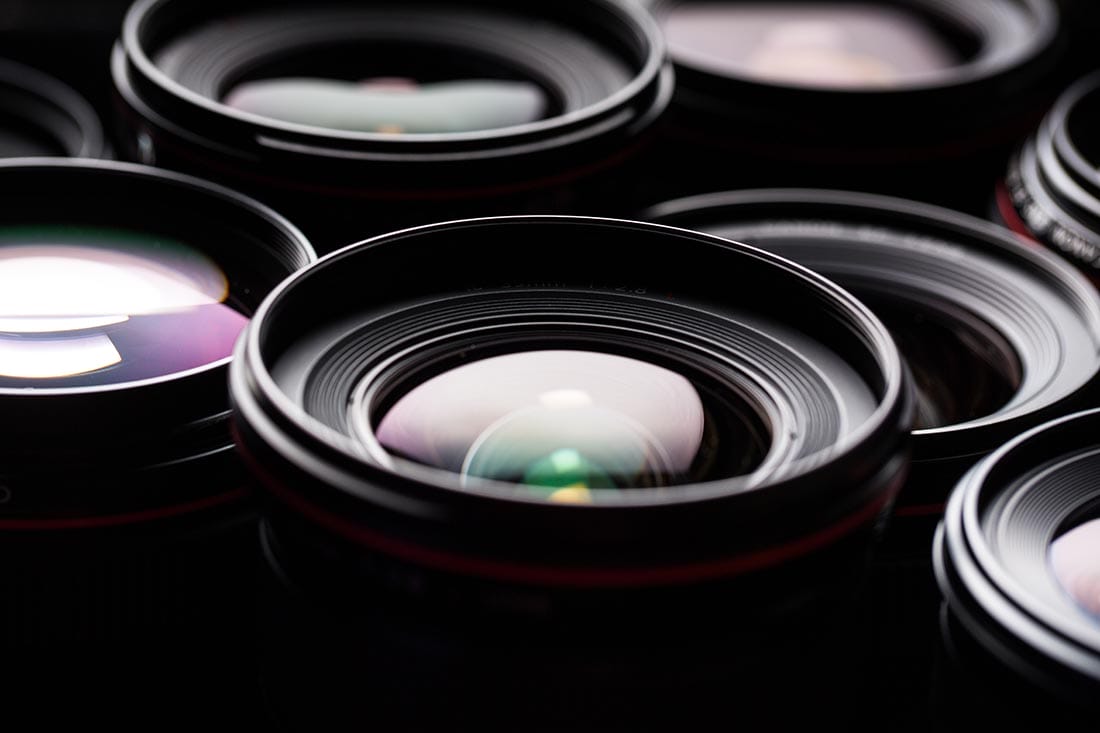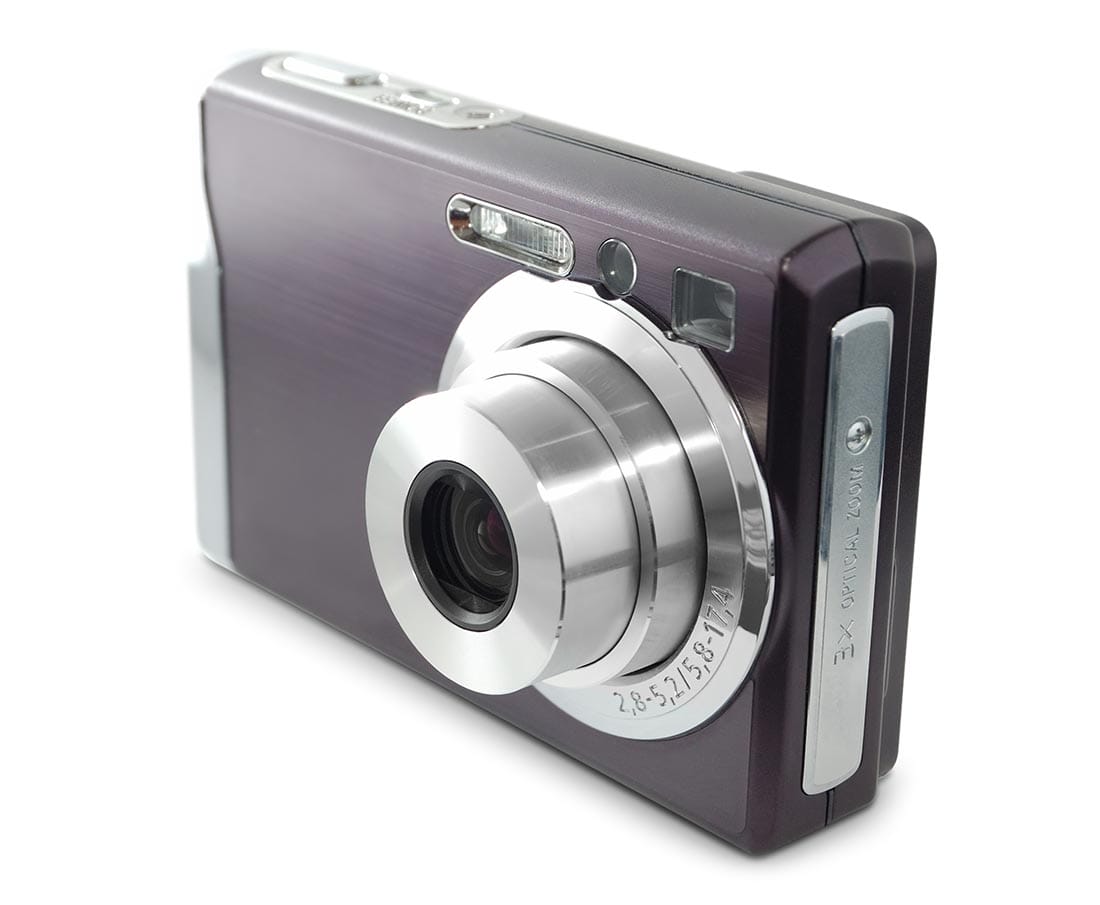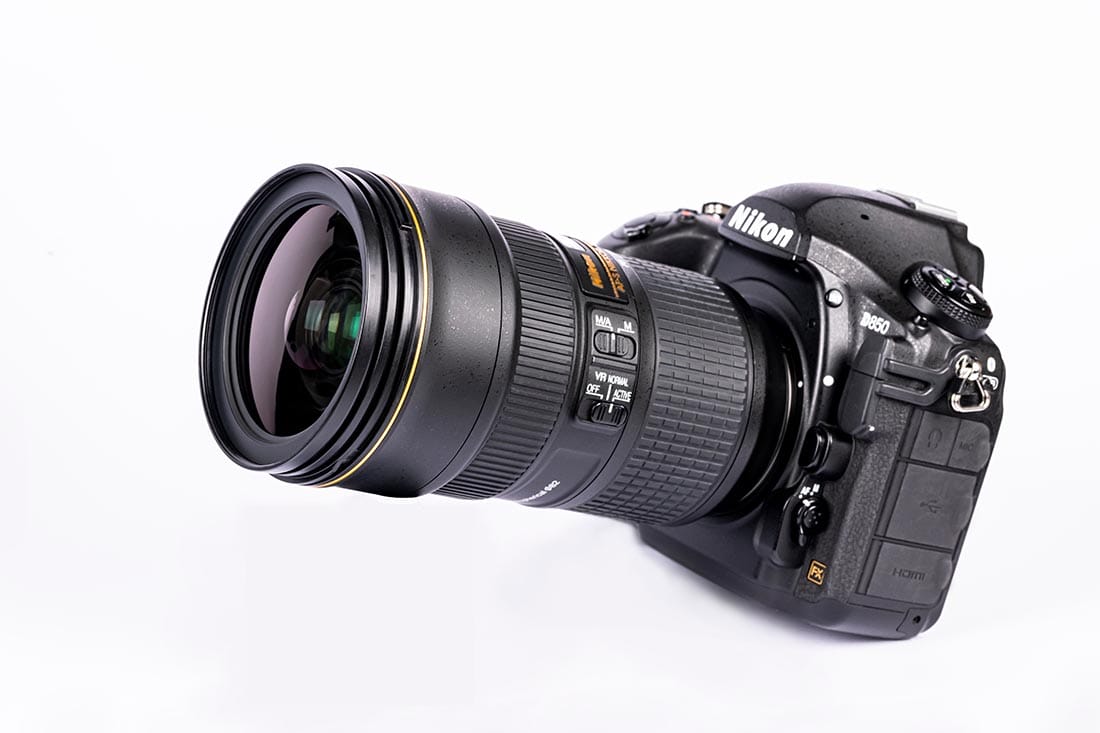
When it comes to choosing a zoom lens to use, you’ll only have two options – digital zoom or optical zoom.
While there is no camera that allows you to use both types on the same body, given the rise in popularity of mobile photography, it is worth knowing the pros and cons to use each when you’re deciding which camera/device to use for your photography.
A digital zoom lens decreases the precise angle of view of a photograph. It does this by cropping an image down to an area that matches the aspect ratio of the original, and then scales the image up to the dimensions of the original.
Even though there is glass in the lens as normal none of the camera’s optics are not adjusted.
Digital zoom lenses are found more commonly on compact cameras and mobile phones. If you have a camera with a button that says ‘W and T’ on it, then chances are it has a digital zoom lens. W means wide (zoom out), and T is trim (zoom in).
You’ll hear the mechanics whirl as the lens physically extend when zooming in. Unlike an optical zoom lens, you don’t need to twist the lens to operate it; it’s all done by buttons on the camera. Because of this electronic control, there is no optical resolution gained when using a digital zoom lens.
Digital zoom lenses are always built into a camera, they can’t be bought separately. All mobile phones and lower-end compact point-and-shoot cameras use digital zooms.

An optical zoom works by moving the glass elements within the lens. The glass elements inside move back and forth creating different focal lengths.
When zooming in, the focal length increases and the opposite when zooming out. Optical zooms won’t lead to a reduction in image quality, though zoom lenses can be less sharp than equivalent prime lenses because of their internal components.
All DSLR and Mirrorless cameras use optical zoom lenses. While they have electrical connections which tell the camera which focal length it’s at, the photographer needs to manually adjust the lens to choose the focal length to begin with.
A simple twist of the lens barrel will extend or reduce the focal length. There are normally markers on the lens barrel to show you which focal length the lens is at.
Because of the heightened image quality in an optical zoom lens, compared to its digital counterpart it means optical zooms are larger in size and therefore heavier in weight. Because they can be purchased separately from the camera, it’s not uncommon for photographers to have multiple zoom lenses that stretch over a range of focal lengths.
The larger the range of focal lengths an optical zoom lens has, the bigger and heavier it will be. Some lenses cover a standard 18-55mm, 75-300mm or even 200-600mm!

You may not have the choice to use digital or optical if you’ve only got one camera. But if have a DSLR and mobile phone camera for example, it’s good to know the pros and cons to make choosing the right camera for the situation.
The convenience and compact nature of digital zooms are the greatest benefit to using such a lens. They retract to a point to make the device handy to put in your pocket for travel photography.
While the image quality isn’t comparable to optical zooms, sometimes just capturing the moment is enough for some photographers. If you never print your photos, then taking shots on your phone all the time won’t prove an issue.
On mobile phones for example, I would recommend avoiding heavy use of zoom if you want to preserve resolution and image quality. Think of digital zoom as photo editing software built into your device.
By enlarging pixels in the centre of the photo and cropping out the rest, digital zoom gives the appearance of magnifying the subject, but in doing so, lessens resolution and image quality.
Think that when you use a digital zoom every time you zoom in you are using less pixels to capture the same sized photo.
The same goes for editing too. When you crop a photo in editing you are taking away pixels but keeping the image the same size (potentially). Avoid cropping heavily into a photo that has already been zoomed in on a lot using a digital zoom lens.


If you’re looking for better image quality, then an optical zoom is the right choice for a photographer.
Optical zooms move the elements inside the lens to change the apparent closeness of the subject by increasing the focal length. When zooming in, the lens moves away from the image sensor, and the scene appears magnified.
This means the full power of the sensor is still being used and no pixels are being cropped out when zooming in. Optical zooms retain the image quality while giving you a closer view of a distant subject.
But the downside is that optical zoom lenses are bigger and heavier – and that may not be convenient for some beginner photographers. Carrying around bigger lenses means having to have a suitable (and larger) camera in comparison.
All this can add to the cost too, but the final image quality will certainly benefit your photography as you grow.


The best choice is the one that suits your type and approach to photography. If you’re a casual mobile photographer, then stick with a compact camera or mobile phone – just know the limits of your digital zoom lens and don’t use it all the time. It’s better to move closer to your subject than zoom in – digital or not!
Optical zooms are the preferred choice of photographers. They give flexibility and quality despite the size and weight disadvantages.
If you were to compare two photographs taken on a digital and optical zoom lens at the longer end you’ll notice the optical zoom shows better image quality and sharpness in comparison.

Hopefully explaining these differences will better help you decide when to use a zoom lens – and which type.
While I understand using digital zooms on a phone have the convenience of capturing the moment, before it goes away instead of physically moving closer, you may be compromising the moment in different way.
There is no right answer all the time in photography – each moment needs its own consideration. If you’ve enjoyed this guide, check out our other articles below.
Shooting sunsets using amazing 5-in-1 magnetic lens filters from Kentfaith, the 1st choice for photo & video products.
Popular memory cards for photography – what’s the best SD card for your digital camera? Choose the right capacity and class speed in our guide
Discover the BEST way on how to clean a camera sensor using swaps, rocket blowers and pencil brushes to give your shots a dust-free finish!
Learn the basics of photography – fast – with our FREE 60-Second Photographer online course. Each class is short and sharp with simple, actionable steps that give you immediate results.
x 30 lessons

© iPhotography™
Become a confident and competent photographer in less than 30 minutes!
Before you leave, make sure you’ve secured your FREE online photography course (worth £29.99)
Each class is just 60-seconds or less making it the fastest and easiest way to learn photography!